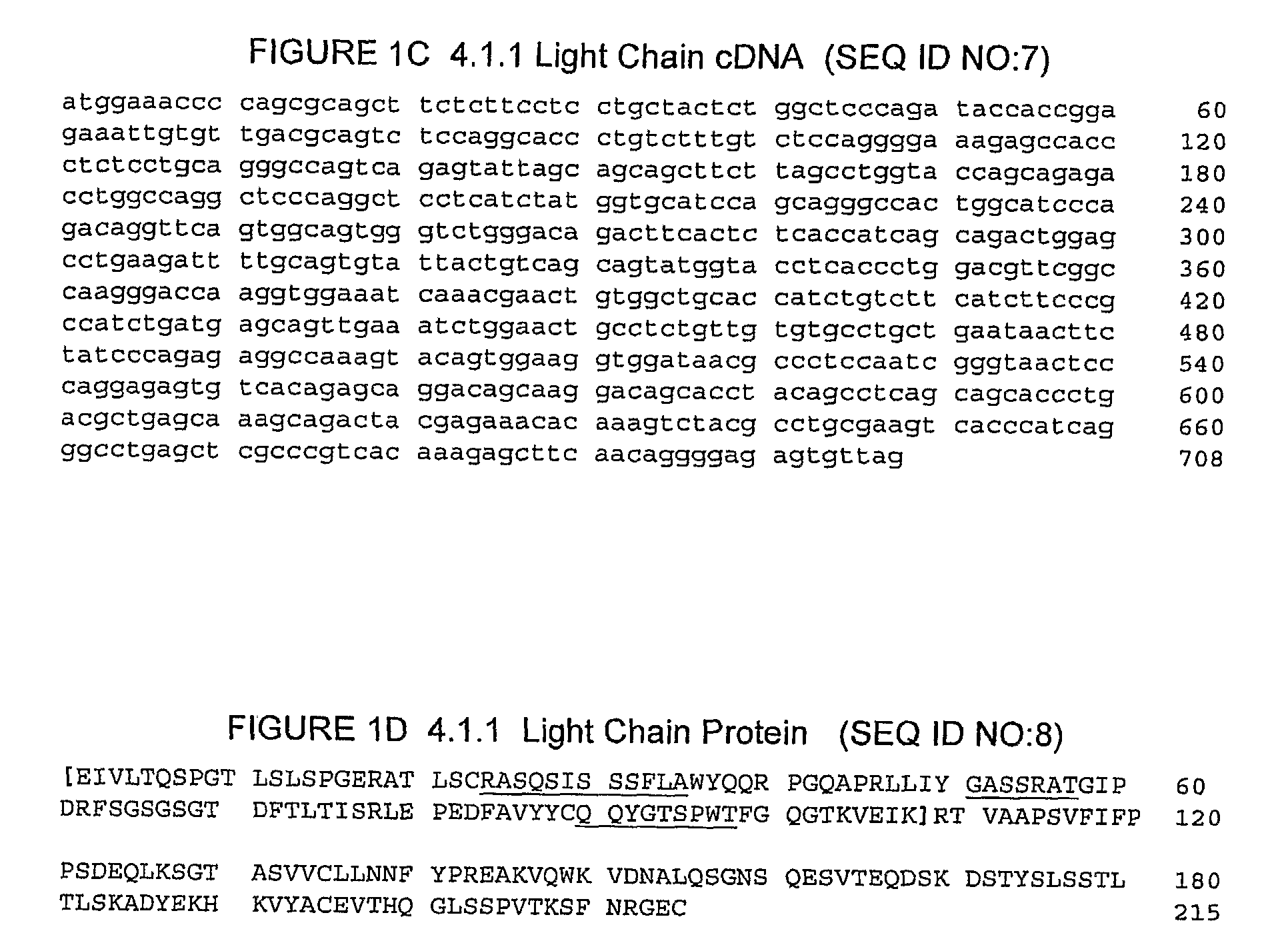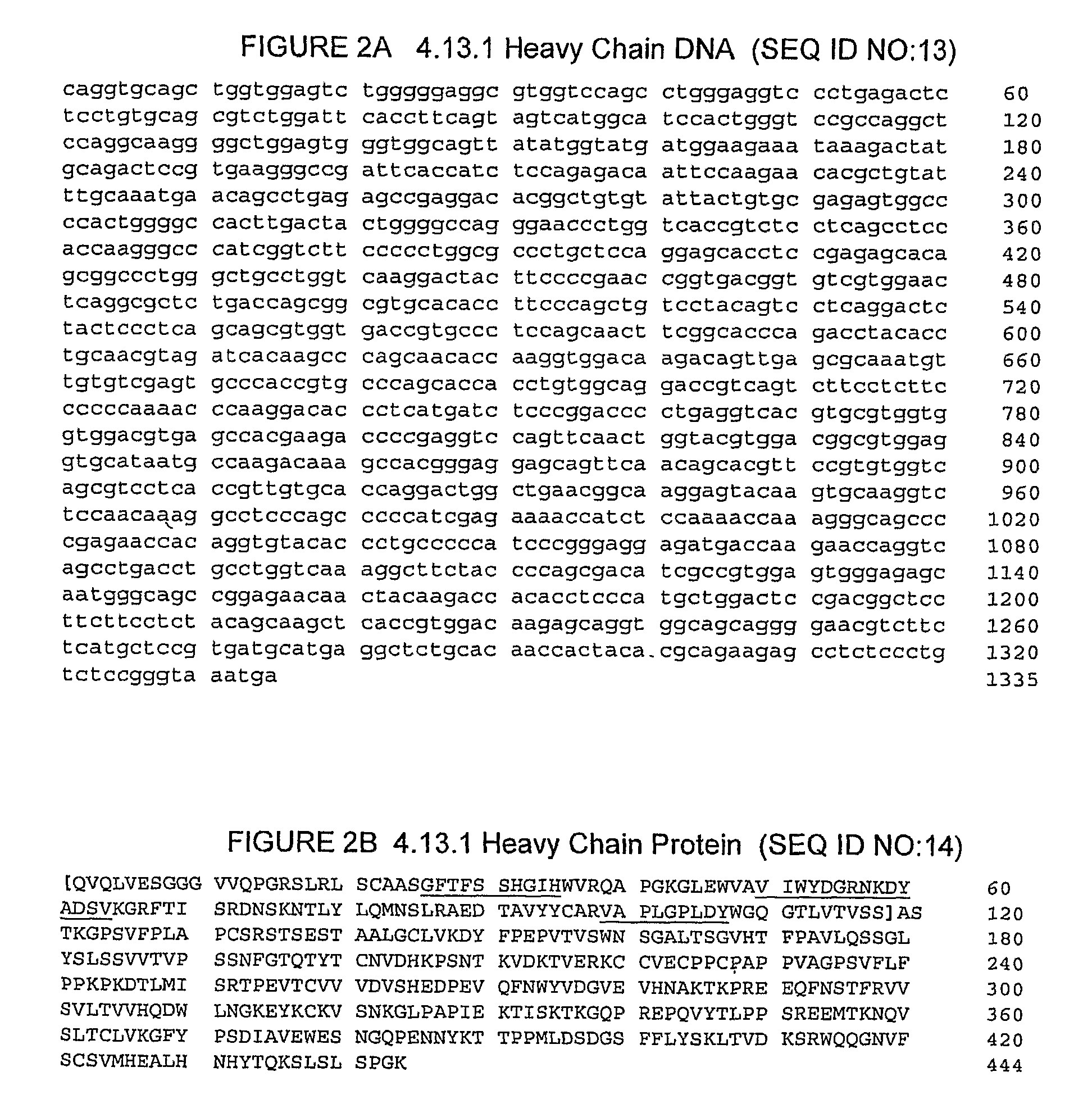Anti-CTLA4 Antibody and Indolinone Combination Therapy for Treatment of Cancer
a combination therapy and antibody technology, applied in the field of anti-ctla4 antibody and indolinone combination therapy for cancer treatment, can solve the problems of infrequent observation, large patient population refractory to these treatments, and life-threatening effects of systemic chemotherapy used in the treatment of neoplastic diseas
- Summary
- Abstract
- Description
- Claims
- Application Information
AI Technical Summary
Benefits of technology
Problems solved by technology
Method used
Image
Examples
example 1
Anti-CTLA4 Antibody in Combination with Indolinone RTKI (Compound 1) for First-Line Treatment of Metastatic Renal Cell Carcinoma
[0249]Following surgery / radiotherapy, if any, patients having metastatic renal cell carcinoma (RCC) with at least one lesion that can be accurately measured in two dimensions and whose size is >2 cm×1 cm by conventional CT scan or >1 cm×1 cm by spiral CT scan are given standard chemotherapy using compound 1 (SU11248) per established protocols. Briefly, compound 1 is administered orally once per day at about 50 mg per day for four weeks. Following a two week resting period, a second four week course of compound 1 is administered to the patient. The cycle of compound 1 followed by rest is repeated as indicated.
[0250]The patient is further administered a single IV infusion (100 mL / hr) of anti-CTLA4 antibody as described herein at a dose of about 3 mg / kg, 6 mg / kg, 10 mg / kg or 15 mg / kg. Prophylactic anti-emetics and anti-diarrheals are given as appropriate. The ...
example 2
Anti-CTLA4 Antibody in Combination with Indolinone RTKI for First-Line Treatment of Metastatic Renal Cell Carcinoma
[0258]Following surgery / radiotherapy, if any, patients having metastatic renal cell carcinoma (RCC) with at least one lesion that can be accurately measured in two dimensions and whose size is >2 cm×1 cm by conventional CT scan or >1 cm×1 cm by spiral CT scan are given standard chemotherapy using an indolinone RTKI (e.g., compound 1, compound 2, or compound 3) per established protocols. Briefly, compound 1 is administered orally once per day at about 50 mg per day for a four week treatment period. Following a two week resting period, a second four week course of the compound is administered to the patient. The intermittent dosing cycle of treatment with the compound followed by a rest period is repeated as indicated.
[0259]The patient is further administered a single IV infusion (e.g., 100 mL / hr, 200 mL / hr, and the like) of an anti-CTLA4 antibody as described herein at a...
example 3
Anti-CTLA4 Antibody in Combination with Indolinone RTKI Treatment of Imatinib-Resistant Gastrointestinal Stromal Tumor (GIST)
[0267]Following surgery / radiotherapy, if any, patients having imatinib-resistant GIST are given standard chemotherapy using indolinone RTKI (compound 1) per established protocols. Briefly, compound 1 is administered orally once per day at about 50 mg per day for four weeks. Following a two week resting period, a second four week course of compound 1 is administered to the patient. The cycle of treatment with compound 1 followed by a resting period is repeated as indicated.
[0268]The patient is further administered a single IV infusion (100 mL / hr) of an anti-CTLA4 antibody as described herein at a dose of about 1 mg / kg, 3 mg / kg, 6 mg / kg, 10 mg / kg, or 15 mg / kg. Prophylactic anti-emetics and anti-diarrheals are given as appropriate. The treatment is repeated after 28 days without dose escalation of the anti-CTLA4 antibody dose, every 28 days thereafter for maximum...
PUM
| Property | Measurement | Unit |
|---|---|---|
| Time | aaaaa | aaaaa |
| Time | aaaaa | aaaaa |
| Dimensionless property | aaaaa | aaaaa |
Abstract
Description
Claims
Application Information
 Login to View More
Login to View More - R&D
- Intellectual Property
- Life Sciences
- Materials
- Tech Scout
- Unparalleled Data Quality
- Higher Quality Content
- 60% Fewer Hallucinations
Browse by: Latest US Patents, China's latest patents, Technical Efficacy Thesaurus, Application Domain, Technology Topic, Popular Technical Reports.
© 2025 PatSnap. All rights reserved.Legal|Privacy policy|Modern Slavery Act Transparency Statement|Sitemap|About US| Contact US: help@patsnap.com



